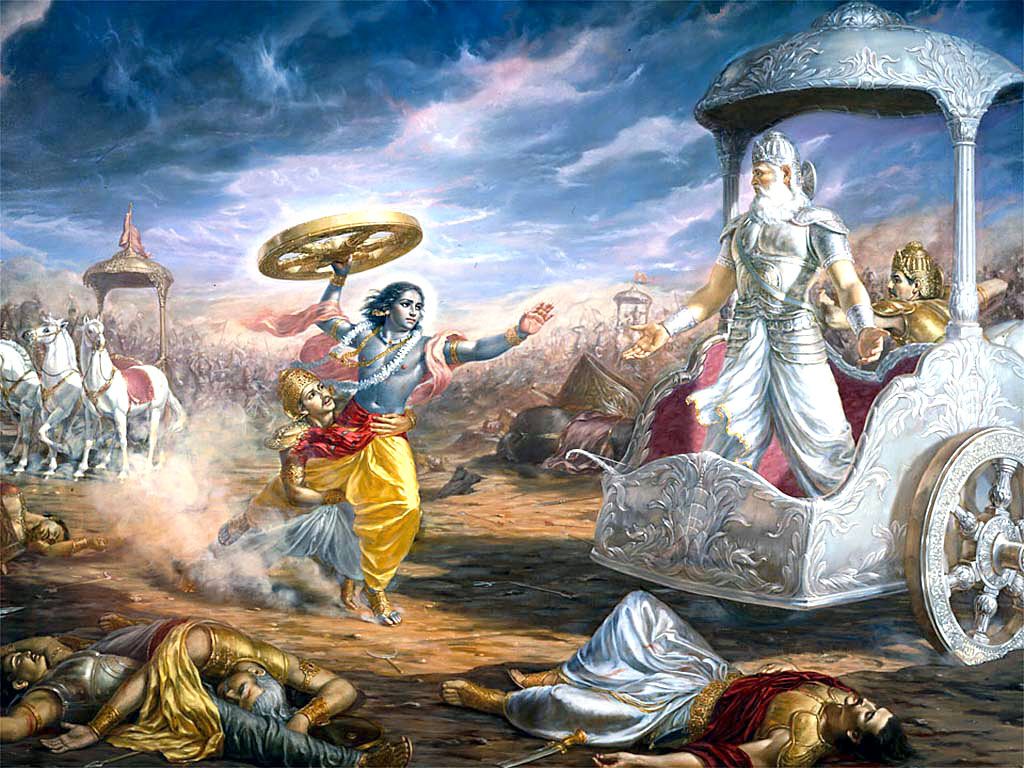
Mahabharata, one of India’s most epic stories, is a tale of two warring families and the struggles they faced. It is divided into 18 Parvas, each containing several chapters. These Parvas are the building blocks of the story, and each one has its own unique characteristics. In this article, we will explore the 18 Parvas of Mahabharata in detail, discussing their significance and relevance in Indian mythology.
Introduction
Mahabharata is an ancient Indian epic that narrates the story of two warring families, the Kauravas and the Pandavas. It is believed to have been written by Ved Vyasa, and it has 18 Parvas, which are the building blocks of the story. The Mahabharata is not only a story of war, but it is also a source of wisdom, philosophy, and spirituality. It is a vast text that provides insights into the ancient Indian way of life, customs, and traditions.
The 18 Parvas of Mahabharata
The 18 Parvas of Mahabharata are as follows:
1. Adi Parva
The Adi Parva is the first Parva of the Mahabharata. It introduces the main characters and sets the stage for the epic story. This Parva includes the stories of King Shantanu and his marriage to Ganga and Satyavati. It also narrates the birth of the Kuru dynasty and the rivalry between the Kauravas and the Pandavas.
2. Sabha Parva
The Sabha Parva narrates the story of the construction of the Sabha or the royal palace by the Pandavas. It also includes the famous game of dice in which the Pandavas lose their kingdom to the Kauravas.
3. Vana Parva
The Vana Parva is also known as the Aranyaka Parva. It describes the Pandavas’ exile into the forest for thirteen years. It narrates their encounters with various sages, including the famous sage Vyasa. It also includes the story of Nala and Damayanti.
4. Virata Parva
The Virata Parva narrates the story of the Pandavas’ stay in the kingdom of King Virata. It describes the various disguises adopted by the Pandavas during their stay in Virata’s kingdom.
5. Udyoga Parva
The Udyoga Parva describes the preparations made by both the Kauravas and the Pandavas for the war. It also includes the famous Bhagavad Gita, which is a conversation between Lord Krishna and Arjuna.
6. Bhishma Parva
The Bhishma Parva describes the first ten days of the war. It includes the famous story of Bhishma’s vow of celibacy, which leads to his downfall on the battlefield.
7. Drona Parva
The Drona Parva describes the next five days of the war. It includes the story of the death of the famous warrior Abhimanyu, who was Arjuna’s son
8. Karna Parva
The Karna Parva describes the story of Karna, who was one of the key warriors in the Kaurava army. It includes the story of his life, his friendship with Duryodhana, and his eventual death at the hands of Arjuna.
9. Shalya Parva
The Shalya Parva describes the story of the battle between Shalya and Yudhishthira. Shalya was a great warrior and the king of the Madras. He fought on the side of the Kauravas.
10. Sauptika Parva
The Sauptika Parva describes the story of the night after the war. It includes the story of the Kauravas plotting to kill the Pandavas while they were sleeping.
11. Stri Parva
The Stri Parva describes the story of the women in the Mahabharata. It includes the story of Gandhari, who was the mother of the Kauravas, and Draupadi, who was the wife of the Pandavas.
12. Shanti Parva
The Shanti Parva describes the story of the aftermath of the war. It includes the story of Yudhishthira’s coronation as the king and the death of the various characters in the Mahabharata.
13. Anushasana Parva
The Anushasana Parva describes the story of the teachings of Bhishma to Yudhishthira. It includes the teachings on dharma, duty, and ethics.
14. Ashvamedhika Parva
The Ashvamedhika Parva describes the story of the horse sacrifice performed by Yudhishthira. It includes the story of the challenges faced by the Pandavas during the sacrifice.
15. Ashramavasika Parva
The Ashramavasika Parva describes the story of the Pandavas’ stay in the forest after the sacrifice. It includes the story of the various sages they encountered during their stay in the forest.
16. Mausala Parva
The Mausala Parva describes the story of the destruction of the Yadava dynasty. It includes the story of the curse placed on the Yadava dynasty, which led to their eventual destruction.
17. Mahaprasthanika Parva
The Mahaprasthanika Parva describes the story of the Pandavas’ journey to the Himalayas. It includes the story of their death and ascent to heaven.
18. Svargarohana Parva
The Svargarohana Parva describes the story of Yudhishthira’s ascent to heaven. It includes the story of the various characters in the Mahabharata who had already reached heaven.
The Significance of the 18 Parvas of Mahabharata
The 18 Parvas of Mahabharata are not only a collection of stories, but they are also a source of wisdom and spirituality. Each Parva has its own unique characteristics, and it adds to the overall narrative of the Mahabharata. The Mahabharata is not only a story of war, but it is also a story of dharma, duty, and ethics. It provides insights into the ancient Indian way of life, customs, and traditions.
Conclusion
The 18 Parvas of Mahabharata are a testament to the rich cultural heritage of India. They provide a comprehensive account of the events leading up to the war, the war itself, and the aftermath of the war. The Mahabharata is not only a story of war, but it is also a story of dharma, duty, and ethics. It teaches us the importance of upholding our values and principles, even in the face of adversity.
If you are interested in learning more about the 18 Parvas of Mahabharata, visit .

